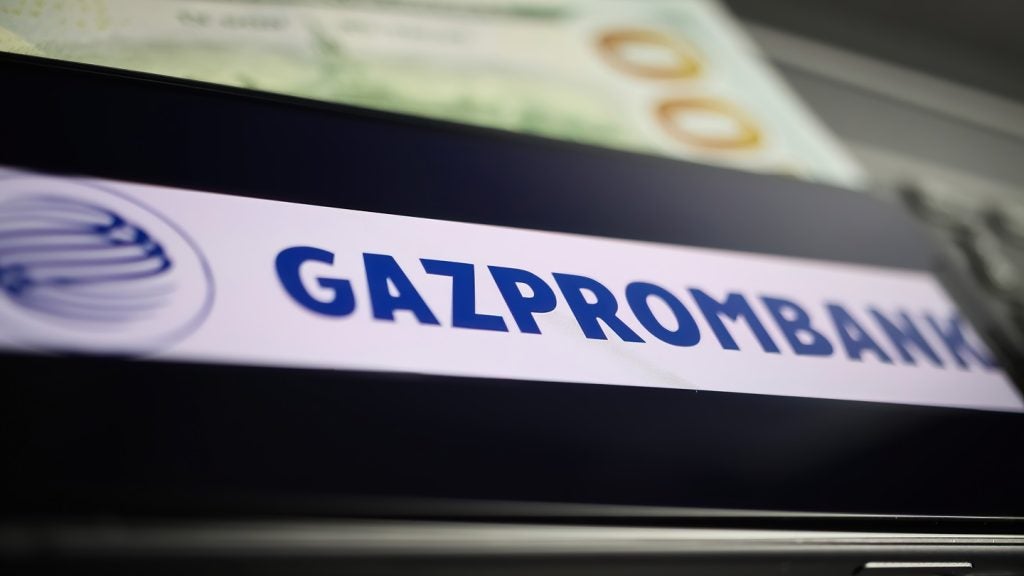Crédit Agricole has increased stakes in Morocco’s Crédit
du Maroc and consumer finance firm Wafasalaf as part of a shift in
its African retail strategy. Dan Jones spoke to Crédit Agricole
deputy CEO, Jean-Frédéric de Leusse, about the bank’s intentions to
maximise the retail potential of its Moroccan
businesses.
As banks across the world refocus in light of the economic
crisis, Crédit Agricole has refined its African strategy, divesting
many of its holdings in banks across the continent. The French
group’s retail banking network in Africa has been purchased by
Morocco’s Attijariwafa Bank for a total consideration of €250
million ($329 million).
 For its part, Crédit Agricole
For its part, Crédit Agricole
is to focus on its Moroccan consumer finance businesses, aiming to
expand offerings in the country as well as using its
substantially-owned retail bank, Crédit du Maroc, as a platform on
which it can launch an m-banking strategy that it hopes to extend
across its retail networks in eastern Europe and, ultimately, on a
group-wide basis.
The move can be seen in the context of an industry-wide
retrenchment that is already beginning to define banking sector
activity in 2009. Crédit Agricole is focusing on what it sees as
its core markets – the eurozone, Eastern Europe and the
Mediterranean.
Speaking to RBI, Crédit Agricole deputy CEO,
Jean-Frédéric de Leusse, acknowledged that the bank is “not ready
to invest more in Africa in retail banking”, but added it did see
opportunities for expansion in consumer finance.
“The deal we have done has exchanged non-core assets with core
assets,” said de Leusse. “We had obtained these African networks
when we bought Credit Lyonnais five years ago, but the group does
not want to focus its strategy on non-core countries. We have
decided to be focused on the eurozone, eastern Europe and the
Mediterranean.”
How well do you really know your competitors?
Access the most comprehensive Company Profiles on the market, powered by GlobalData. Save hours of research. Gain competitive edge.

Thank you!
Your download email will arrive shortly
Not ready to buy yet? Download a free sample
We are confident about the unique quality of our Company Profiles. However, we want you to make the most beneficial decision for your business, so we offer a free sample that you can download by submitting the below form
By GlobalDataThe stake divestment is comprised of an 81 percent stake in
Crédit du Congo; a 51 percent stake in Société Ivoirienne de
Banque; a 65 percent stake in Société Camerounaise de Banque; a 59
percent stake in Union Gabonaise de Banque; and a 95 percent stake
in Crédit du Sénégal.
In return, Crédit Agricole is acquiring an additional 24 percent
stake in Morocco’s Crédit du Maroc for €144 million, a move which
takes its total holding up to 77 percent. The bank has also paid
€71 million to increase its stake in Moroccan consumer finance
lender Wafasalaf, via its Sofinco subsidiary, from 34 percent to 49
percent.
Long relationship
 The relationship between
The relationship between
Crédit Agricole and Attijariwafa is one that the banks see as
continuing to bear fruit despite the respective divestments.
“It has been a long relationship”, said de Leusse, referring to
the fact that Crédit Agricole once held a 15 percent stake in
Wafabank, the institution which merged with Banque Commerciale du
Maroc in 2003 to form Attijariwafa.
Attijariwafa will remain a significant shareholder in Wafasalaf,
enabling the consumer finance firm to continue to distribute its
products through both banks’ Moroccan branch networks. But engaging
in more concerted collaborations remains a fine art, said de
Leusse, who was eager to emphasise the individual benefits of the
two stake-building moves.
“The additional Wafasalaf share uptake is not so that they can
do more with Crédit du Maroc,” he said.
Wafasalaf, which has 33 branches in Morocco, had a 34 percent
share of the country’s consumer finance market in 2007, its success
in part due down to the strategic positioning of outlets within
Morocco’s biggest retail stores.
The lender has also achieved good results through its
segmentation strategy, which has seen it launch specific offerings
targeted at women, retirees and other demographics. These
achievements mean Wafasalaf is now looking further afield for
future growth.
“We want to go into other countries in North Africa or maybe
sub-Saharan Africa, to build partnerships, with the support of not
only Attijariwafa but also of the French companies such as Sofinco.
But the idea is that Crédit Agricole itself will not invest more in
these countries,” explained de Leusse.
“For Wafasalaf, the idea is to organise an expansion into the
African area in consumer finance using their know-how. They are
also big in Tunisia, for example – I think with the network they
have now they will do very well.”
At Crédit du Maroc, the focus is firmly on domestic expansion.
The bank is currently the sixth largest in Morocco, and aims to
break into the top five by 2010. That target, however, is set
against a market which contains not only the strengthened
Attijariwafa but also the presence of three other French banks –
Société Générale, BNP Paribas and Groupe Banques Populaire – via
their local subsidiaries.
“The idea is to slowly increase our market share, because there
is a high level of competition between the French players in
Morocco. All of us are very aggressive,” said de Leusse.
It is not only Crédit Agricole that is increasing collaborative
efforts with its Moroccan subsidiary, however: in September 2008,
for example, Banque Marocaine pour le Commerce et l’Industrie
adopted the “bank for a changing world” slogan of its parent BNP
Paribas for the first time.
Crédit Agricole believes the most effective way to increase its
own market share in the country will be via an increase in branch
numbers. It is aiming to open 50 new Crédit du Maroc branches in
both 2009 and 2010, a target which will increase the bank’s
Moroccan branch network by almost 50 percent since 2000.
Consistently profitable
 De Leusse is of the opinion that Morocco will remain
De Leusse is of the opinion that Morocco will remain
well-insulated from the current global economic headwinds, and
points to the fact that both Wafasalaf and Crédit du Maroc remain
consistently profitable.
“We feel that the growth in Morocco will stay at good levels.
The level of risk is limited – there is no real estate bubble in
Morocco and things are well controlled by the regulator. I am not
expecting big difficulties,” he said.
Crédit du Maroc’s results for the six months to July 2008 appear
to support this confidence. The bank saw net banking income rise by
12.2 percent year-on-year to MAD802 million ($98 million), while
customer loans and deposits rose by 40 percent and 16.7 percent
respectively.
This success has been achieved on the back of a strategy which,
in de Leusse’s words, defines Crédit du Maroc as a “field of
experience in terms of low-cost products”. In 2006 the bank
launched a rechargeable prepaid card known as Daba-Daba – meaning
“quick quick” or “at once” in Arabic – and the product now has
60,000 customers.
The marketing strategy saw the product targeted not only at
consumers but also employers, who were encouraged to use the cards
as a simple, cost-effective way of paying their workers.
The bank is now attempting to transfer the concept to its
Eastern European markets. But the most practical cross-border
product launches have come through collaborations with LCL, Crédit
Agricole’s French retail banking subsidiary.
The two banks have made significant gains in market share among
Moroccan migrants and students in France through a specially
developed product range.
The service is particularly attractive from a cross-selling
perspective, offering migrants products such as current accounts
and credit cards as well as helping them secure accommodation.
“It was very easy to build something between those two networks.
As both are French speaking we are able to organise things at a
very low level within the bank,” said de Leusse, who characterises
the Moroccan market as “very close to that seen in France, but with
the characteristics of an emerging country”.
He continued: “From some sides the Moroccan industry is a step
behind the French; for instance in the provision of cheques. But in
other aspects, such as mobile banking, it is a step ahead.”
Scheduled to launch in the second half of 2009, m-banking
services in Morocco will form a test case for Crédit Agricole’s
wider plans for the channel.
Crédit du Maroc customers will be able to check card balances
and transactions via their mobile phone as well as paying utility
bills.
De Leusse advised that Eastern Europe and Egypt were among the
other markets next in line for a possible m-banking roll out, but
added that a single cross-border strategy would be difficult to
implement.
“We are trying to see how we can manage the m-banking project in
different countries, with the idea being to optimise costs in each
location,” he said.
“A year ago, when we spent time seeing how we could expand in
Algeria, during the [subsequently postponed] privatisation of
Credit Populaire D’Algerie, one of the main issues was to see how
we could use mobile banking to achieve our target more quickly.
“In Algeria you have 15 million mobile phone owners but just 1
million people with bank accounts. The difference is clear and it
means in countries like that the growth of the retail banking
industry will be lead through mobile banking.”
De Leusse also cited the example of 2006 Noble Peace Prize
winner Mohammed Yunus in Bangladesh (see RBI 599), adding
that Crédit Agricole was looking “very closely” at his efforts to
develop m-banking as part of a microfinance project attempting to
bring banking services to some of the world’s poorest people.
Unlike the situation in Algeria and Bangladesh, however, de
Leusse believes the more developed Moroccan banking industry will
follow a path akin to those seen previously in Europe and other
Western markets.
“Like all other Moroccan banks, we need to open new branches,
because when bancarisation levels are at 35 to 40 percent, you need
to open new branches to acquire new clients. All banks in Morocco
are opening more branches now,” he said.







